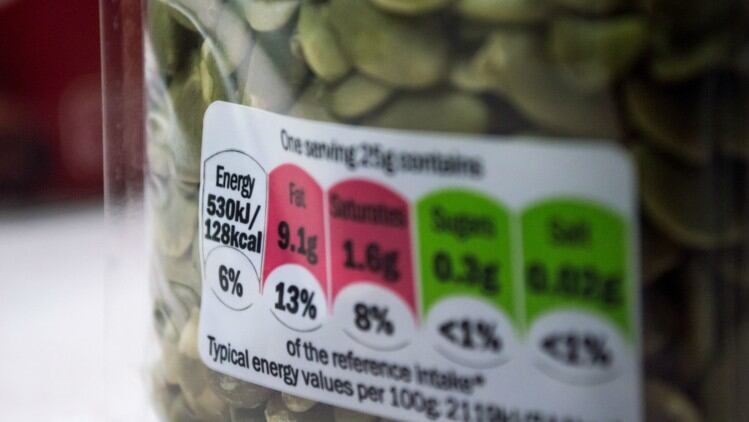The study was jointly conducted by multiple health and nutrition organisations in China including the Chinese Academy of Medical Sciences and Chinese Nutrition Society, as well as several population health research bodies in Australia including the University of Wollogong and University of Sydney.
The researchers performed a cross-sectional study using a questionnaire to survey 2,407 parents of students in primary and secondary schools across 72 schools in six Chinese provinces (Beijing, Jiangsu, Guangdong, Henan, Sichuan and Heilongjiang). The locations were selected to reflect the preferences of consumers across both urban and rural regions.
In the survey, the parents were also shown five FOPL formats: multiple traffic lights (MTL) which provides direct nutrition information and colour codes these according to content; Nutri-Score which uses colour coding and the letters A to E to summarise product healthfulness; Warning labels which denoted foods high in certain critical nutrients; Health logos which made recommendations without including specific information; and Guideline Daily Amount (GDA) labels, which only show information but do not specify or recommend regarding product healthfulness.
Participants were asked specific questions about which FOPL was found to be the most attractive to them, which provided the information they needed the most to make purchase choices, and which enabled them to make healthier food choices the most quickly.
“When asked which FOPL format was seen as most attractive, the highest percentage (35.1%) of participants nominated MTL as their preference, followed by warning labels (21.9%),” said the study authors.
“Health logos followed with 16.6%, then GDA at 13.8% whereas Nutri-Score ranked the lowest at 12.5%. Also of note was that parents from rural areas were more likely to prefer MTL (42.4% in rural vs 30.4% in urban) whereas parents from urban areas preferred warning labels (26.6% vs 14.8%).
“The MTL format was also seen as the one that provided the information needed most with 42.4% of parents selecting this followed by warning labels far behind at 19.3% - the other options all scored below 10%. In terms of the format enabling them to select healthier food the most quickly, MTL (33.5%) and warning labels (24.2%) again emerged triumphant
“[This overwhelming preference for MTL] is likely due to the fact that most consumers are not equipped to interpret [large amounts of nutritional information] due to factors such as low levels of nutrition knowledge and time pressure – [and previous studies have shown that] FOPL schemes with text and symbolic colour are easier to interpret than simply providing numeric information.
“[Interestingly], overall households with lesser children had a tendency to a higher preference for warning labels – those with one child (26.1%) preferred these a lot more than those with two (19.7%) or three (14.9%).”
In addition to these, the participants were also surveyed on the nutrients which content they believed need to be highlighted and identified on the FOPL, as well as the types of prepackaged food products that were in most need of FOPL to help them make healthier food choices.”
“Sugar was the number one most preferred nutrient that the parents identified as needing to be identified on labels at an overwhelming 80.6%,” the authors added.
“This was followed by salt (80.6%), total fat (75.4%), energy (71.6%), carbohydrates (71.5%), saturated fat (65.4%), and trans fats (64.9%) – [generally] nutrients of which excessive consumption is known to have negative effects on health.
“As for pre-packaged food types, the participants highlighted baked products (63.7%), milk and dairy products (63.3%), sugar-sweetened beverages (61.4%), chocolate, candy and confectionery (60.3%), potato chips/crisps, and crispy rice (59.4%) and processed meat products (58.9%) as the top categories in China most in need of these FOPLs, [with] consumers often feeling confused when making healthier choices for these.”
Guiding policy development
Notably, the highly-debated Nutri-Score FOPL scheme which is being utilised in France, Belgium, Switzerland, Germany and the Netherlands and even recommended by the World Health Organisation (WHO) emerged as the worst-performing scheme on all fronts in the eyes of Chinese consumers, being seen as the least attractive (12.5%), least informative (7.8%) and least able to help them make quick healthier choices (9.5%).
“[From this], we can see that the results suggest that interpretive aids such as colour were viewed favourably by parents, but an oversimplified format [like] Nutri-Score risks excluding information that is desired by consumers and as a consequence being less desirable,” said the authors.
“Previous studies have suggested that interpretative nutrient-specific systems such as MTL and warning labels which give information about specific nutrients rather than an overall indicator of healthiness had the most impact on knowledge [and] this is consistent with the current finding that Nutri-Score was [seen to not provide] enough information and is harder to interpret.
“As such,decision-makers developing strategies to introduce FOPL in China should consider using interpretive elements including subjective words, symbols, and colour for consumers to use easily.”
Study: Types and Aspects of Front-of-Package Labeling Preferred by Parents: Insights for Policy Making in China
Source: Nutrients
Authors: Cui, J. et. al.





